Top 10 Places to Visit in Bhutan
Explore the land of Thunder Dragon!
Explore the land of Thunder Dragon!
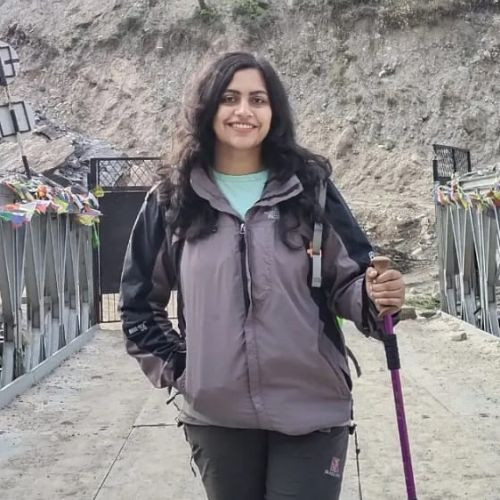
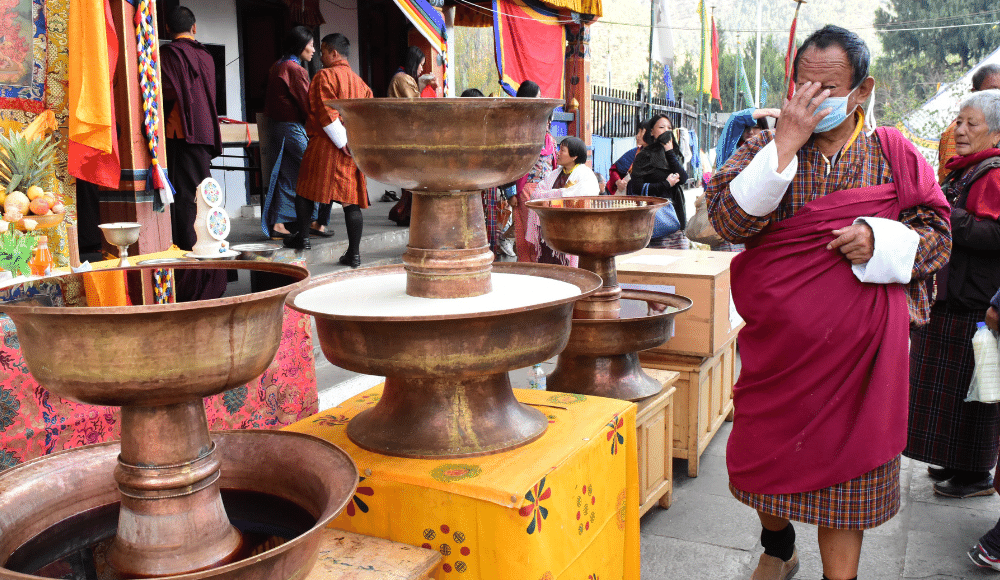
The tiny nation of Bhutan, which is graced with stunning scenery and royal culture, straddles the border between India and China. The traditional Buddhist culture is fascinating in Bhutan's mountainous terrain, which is dramatic and untouched. Visitors will be taken on a journey through snow capped mountains bordered by lush forests and plummet to flower-lined valleys, where they will discover an incredibly diverse biodiversity that includes distinct birds and mammals. Dzongs and monasteries are common sights.
Thimphu is the capital of Bhutan. It's the only city in the world without traffic lights. You will be enthralled by the country and people whose love and respect for their religion and land is all-encompassing, whatever you do or where you go.
Bhutan is a landlocked country in South Asia. It is bordered by China's Tibet Autonomous Region to the north, India to the west (Sikkim), east (Arunachal Pradesh), and south (Assam and West Bengal). After the Maldives, Bhutan is the second least densely inhabited country in Asia. It has a total area of 38,394 kilometers and extends 306 kilometers from east to west and 145 kilometers from north to south.
The Kingdom of Bhutan is one of the world's most cheerful nations. It is the location where peace, honesty, and diversity among people are fully appreciated. The fourth king of Bhutan, Jigme Singye Wangchuck, declared that ‘Gross National Happiness is more essential than Gross Domestic Product.' The idea of Gross National Happiness (GNH) has influenced the country's economic and social strategy as a result.
Takin is the national animal of Bhutan. It is tied to Bhutanese history and folklore as well. Takin appears to be a cattle or goat breed. It's an animal with short muscular legs and a thick neck that eats bamboo.
Visit to the beautiful land of Bhutan which is also called the “Land of Happiness”
An exquisite chance to learn about the unique culture, customs, and way of life of the Bhutanese people.
A wonderful chance to explore Bhutan's breathtaking landscapes and natural settings.
Glorious opportunity to witness Bhutan's stunning monasteries and dzongs, which have long preserved the country's wonderful and historic past.
Visit to the Tiger's Nest temple complex, which serves as Bhutan's tourism brochure's crown jewel.
You will also get to observe the Blue poppy which is one of the rarest flowers in the world and see the national animal of Bhutan as well as other exotic species of birds and wildlife in the different wildlife reserves of the country.
Bhutan is famous for its ancient culture, customs, and distinct biodiversity since time immemorial. The festivals in Bhutan are known for their profundity, vitality, and joy. The ancient customs and legendary victories of Buddhism are re-enacted and celebrated all over the country with such fanfare and show that it draws visitors from all around the world.
There are different beautiful festivals celebrated around Thimphu. Some of them are:
Paro Tsechu Festival
Haa Summer Festival
Thimphu Tsechu Festival
Punakha Drubchen and Tsechu Festival
Wangdue Phodrang Tshechu Festival
Bhutan has about 20 languages and dialects. Dzongkha is the only official language of Bhutan, which literally translates as ‘language of the fort.' It is spoken by more than 500,000 people in the country.
Dzongkha is the country's official language, and it is mostly employed for administrative tasks, as well as in fortifications and dzongs. It is the main language in western Bhutan. English, on the other hand, is used to teach children in schools throughout Bhutan and is also spoken frequently there. Dzongkha, Tshangla, and Nepali are the three major languages of Bhutan.
The national dress of the Bhutanese men is known as ‘Gho,' which is a knee-length, robe-like cloth that is wrapped around the body and fastened with a belt. The national dress of the Bhutanese women is known as 'Kira.' It's a knee-length, robe-like garment that wraps around your body and has a belt to keep it in place. The clothing has a bulging region in the top section that men use to store things like wallets and cell phones. The outer garment, known as a Tyoko, is an apron-like dress with an inner layer known as Wonju.
Archery is Bhutan's national sport. The bow and arrow are important figures in Bhutanese folklore. Even pictures of deities with bows and arrows are considered good omens. Archery contests are held throughout the country on local and country-wide religious and auspicious occasions.
The country's traditional culture is alive in its performing arts, such as dance and music, which are essential parts of ceremonies and festivals all around Bhutan. Traditional arts and crafts aren't vestiges of a bygone era, unlike many others. Traditional artistic and artisanal skills are still cultivated today, exactly how they were hundreds of years ago. The country of Bhutan has a long history of textiles. The distinctive way, color, and style of traditional Bhutanese weaving are becoming increasingly valued by textile users and experts from across the globe.
Bhutan is a country with an aesthetic integration of a distinctive and genuine range of natural wonders, fantastic culture, and customs, as well as breathtaking variety that provides a great journey.
Bhutan has successfully been able to preserve its long-standing customs from years ago, and it has attracted many tourists worldwide. The lovely religious, historical, artistic, and glorifying Bhutan offers you a variety of awe-inspiring locations where you can fully immerse yourself in the majesty of Bhutan while also experiencing and creating one of the greatest memories while your Bhutan holiday.
|
S. N. |
Monument/Place |
|
|
Tiger’s Nest or Taktsang Monastery |
|
|
Changangkha Lhakhang |
|
|
Motithang Takin Preserve |
|
|
National Museum of Bhutan |
|
|
Tashichho Dzong |
|
|
Kyichu Lhakhang |
|
|
Kuensel Phodrang |
|
|
Namgay Artisanal Brewery |
|
|
Punakha Dzong |
|
|
Haa Valley |
There are many and numerous interesting and exciting sights in Bhutan, but they cannot all be seen in a single trip. We've put up the top 10 must-see locations in Bhutan as an incentive for you to visit them when you go there. You should visit these places if you go to Bhutan so that you may get an idea of what it's like and appreciate the country's many aspects.
Tiger's Nest, a spectacular and lovely spot located on the side of a mountain cliff at 3120 meters above sea level, is one of Bhutan's most famous attractions. Tiger's Nest monastery in Bhutan is an excellent spot to go hiking and enjoy the natural world to the full; expert guides are available for hire, and a cafe halfway down offers you a place to unwind and charge your batteries.
This is a natural wonder that must be seen while in Bhutan. One can't miss this amazing historical location even a short Bhutan tour.
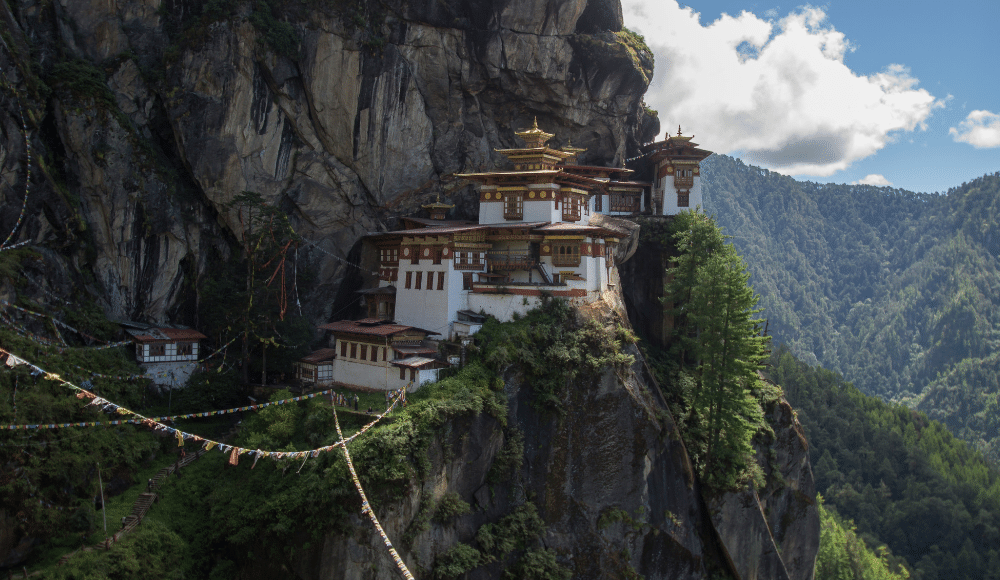
The Tiger's Nest temple complex is the crowning glory of Bhutan's tourist brochure. It is a mysterious, breathtaking, and devout place. It is also among the most easily accessible Buddhist religious sites in the Himalayas, with a short drive from Paro followed by a moderate 2-3 hour hike.
The temple is located around the cave in which Guru Padmasambhava, the "second Buddha," meditated and first introduced Buddhism to Bhutan.
The interior of the complex, like many of Bhutan's religious sites, is a brightly colored sequence of shrines and statues, silks, butter lamps, and wall murals. The layout of the complex, on the other hand, will surprise the casual viewer who has previously been to Bhutan on monastery visits: twisting passages and short, sharp stairways nestled in impossible balance with the sheer face of the cliff, with a valley over a thousand feet deeper.
The trek is a delightful experience in and of itself. While keeping an eye on the path and attempting not to look down, you must take in the beauty of the vast natural scenery while ascending. The mist-covered cliff-tops add to the spiritual and historical atmosphere of the monastery. They also remind you how high up you are, adding to your sense of accomplishment when you reach the top.
Moreover, in order to experience the beautiful historical glory and beauty of Bhutan, you should compulsorily visit Tiger’s Nest while in Bhutan.
The opening time of Tiger’s nest is 8 AM to 1 PM and 2 PM to 5 PM daily from October to March and it opens until 6 PM from April to September.
The tiny temple complex of Changangkha Lhakhang is located on the tip of a spur that extends east from the hills surrounding Thimpu. It is possible that it is the oldest existing temple in Thimphu, having been constructed around the 13th or 14th centuries. The monastery's major components and foundations are extremely ancient and long-dated.
Changangkha Lhakhang is a Buddhist temple in Bhutan that is visited by hundreds of people each day. This temple is deeply rooted in the local culture and tradition, and it plays an important role in the local community.
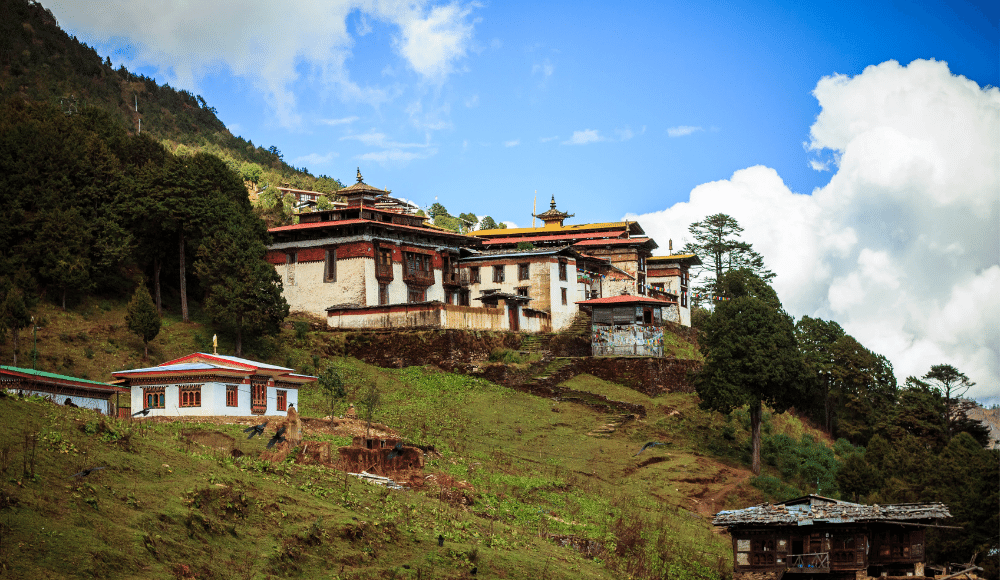
The temple's outer area is adorned with magnificent prayer bells inscribed in black and gold writings. The temple's appearance is enhanced by two massive prayer wheels that are beautifully buried inside the structure, making it one of Thimpu's most remarkable locations to visit.
The temple is popular with parents visiting the cemetery to receive blessings from Genyen Domtsangpa, the temple's protective god.
The entrance is adorned with a massive portrait of the king, which sets the tone for the architectural marvel. Architectural fans will enjoy viewing the prayer wheels, golden spire, Chenrezig statue, and intricate carvings inside. This temple consists of several parts for Buddhist monks who learn the teachings, a meditation chamber, and a whole area with ancient artwork.
The temple is composed of three interdependent parts. The first section is devoted to Buddhist teachings. Another two sections are reserved for Guru Rinpoche and his followers, as well as a meditation chamber for the local monks.
The gleaming gold roof, which reaches the top, is breathtaking at night. The style is basic and inspired by ancient Bhutanese architecture. As the mountains stand in the background of the temple, it is beautiful and tranquil.
Furthermore, you must visit this magnificent temple, Changangkha Lhakhang, to learn and appreciate Bhutan's culture.
Changangkha Lhakhang is open every day throughout the week from 8 AM to 6 PM.
The Motithang Takin Preserve, in the Motithang district of Thimphu, Bhutan, is a Takin wildlife reserve that is home to the country's national animal.
It's worth going out of your way to see these unusual animals. Early morning is the best time to spot them when they congregate around the fence to eat. With species like the red panda and uncommon Himalayan serow living in it, the reserve is one of a kind among all the places to visit in Thimpu.
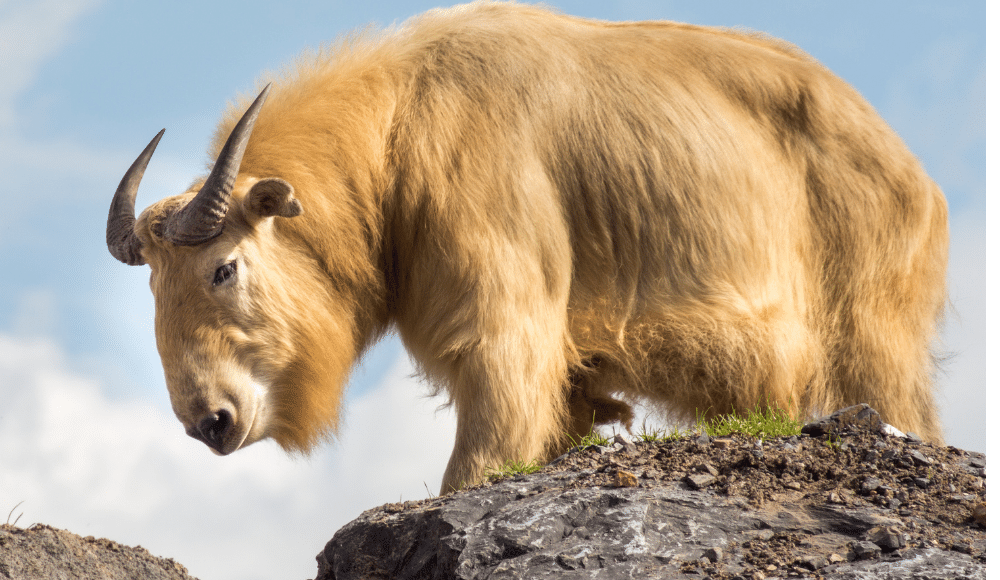
This preserve is a fantastic spot to photograph several endangered species since photographers are permitted to take photos of the animals from close range. This wildlife sanctuary is ideal for nature enthusiasts.
A stroll of approximately half an hour will expose you to a variety of exotic birds and animals that wander about the region unrestrained and in their ideal habitat. The wildlife here is breathtaking, and you should see it at least once.
Without a doubt, the Motithang Takin Preserve is a must-see location for wildlife explorers and lovers of Bhutan who wish to witness something unique during their holiday.
If you have time in Thimphu and want to go for a nature walk, Motithang Takin Preserve is highly recommended. The park has a beautiful path that runs alongside the pine trees. This trek is invigorating. You may rest by the gazebo and benches beside the tracks if you get bored of hiking.
Motithang Takin Preserve is open 7 days a week with timings from 9 AM to 5 PM.
The National Museum of Bhutan is located in Paro, which is one of the best venues to learn about Bhutan's cultural past. The museum, which is located in Paro, was established in 1968. The popular museum in Bhutan is a site where you can see and learn about all of Bhutan's important artifacts and historical relics.
The National Museum of Bhutan has successfully maintained some of Bhutan's most remarkable historical artifacts. The National Institution of Bhutan is a cultural museum in the western Bhutanese town of Paro.
It is positioned above Paro Dzong and depicts the country's progress from the Stone Age to its current status as a Mahayana Buddhist and multicultural kingdom. The cultural museum houses a collection of artworks as well as some of Bhutan's most remarkable bronze statues and paintings.
The museum is housed in the Paro Ta Dzong, a historic watchtower that today houses hundreds of ancient Bhutanese antiques and artwork, such as traditional clothing, armor, weaponry, and handcrafted everyday objects. The National Museum's collection presents a snapshot of the country's varied cultural traditions.
Tourists visiting the museum will have the opportunity to learn about Bhutan's unique past, which includes a wealth of creative traditions and disciplines. The museum's atmosphere is a fascinating blend of the past and the present, and it is an experience not to be missed while on vacation in Paro. Tourists will come to find the Natural History Gallery and Ritual Objects as they explore the museum.
The National Museum of Bhutan is a haven for history buffs and an excellent resource for people interested in learning more about Bhutan. The National Museum in Paro is where the past meets the present.
The National Museum of Bhutan is open throughout the week with timings 9 AM to 5 PM.
Tashichho Dzong is near Thimpu's town, on the Wang Chhu River's banks. It is a massive structure with well-kept grass and lovely plants surrounding it.
Visitors to the fortification are greeted by a magnificent rose garden in front of the building. The well-kept landscape that surrounds the structure is very lovely. Almost all sightseeing excursions of Thimpu start with a visit to this stunning Dzong, which has a golden roof.
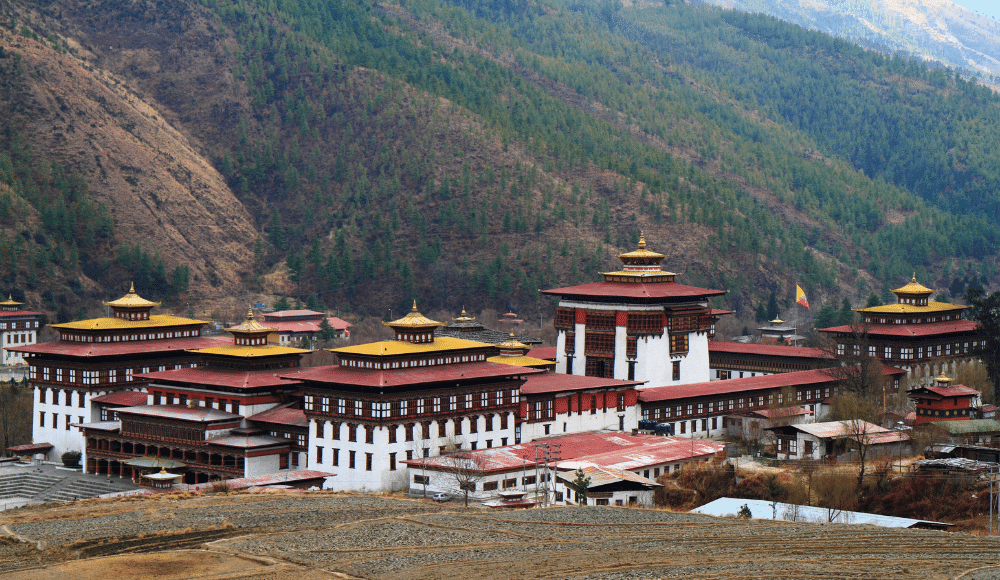
The building's woodwork is beautiful and awe-inspiring. The well-kept gardens that surround the Dzong are serene and offer tourists a spectacular vista.
The king's office, the administration block, and the spiritual portion are the three main sections of the Tashichho Dzong. Beautiful artworks are housed within the Dzong, which receives constant praise from art aficionados. The wall carvings are elaborate and Buddhist in nature. The Dzong is more than just a brick-and-mortar edifice. It is Thimpu's identity and the pride of Bhutanese.
One thing to keep in mind when visiting the Tashichho Dzong is that photography is absolutely prohibited inside. However, guests are encouraged to bring their cameras outside to capture the breathtaking scenery as well as the illuminated photographs of the fortress at night. Tourists are not permitted to enter the premises dressed casually; T-shirts, shorts, skirts, and sleeveless tops are all prohibited.
The Dzong is a Tibetan, Bhutanese, and Chinese architectural style. The massive architecture is reflected in the high external walls, which are combined with organizational offices, temples, monks' quarters, and diverse courtyards.
The Tashichho Dzong's allure is enhanced by the nearby hills, gardens, and greenery.
Moreover, it is one of the beautiful sceneries you should not miss while visiting Bhutan.
The time to visit Tashichho Dzong is from 11 AM to 4 PM.
The Kyichu Lhakhang is located on Paro's northwestern outskirts. It is one of Bhutan's oldest and most magnificent temples. It is also known as Lho Kyerchu or Kyerchu, and it is regarded as Bhutan's sacred jewel. Jowo Lhakhang's main temple has been around since the 7th century.
The Kyichu Lhakhang has a long and fascinating history. It was built in the 7th century by Songsten Gampo, a Tibetan Emperor, to fight a giantess who was preventing the spread of Buddhism. According to legend, the monarch erected it in one night, which is a marvel in and of itself.
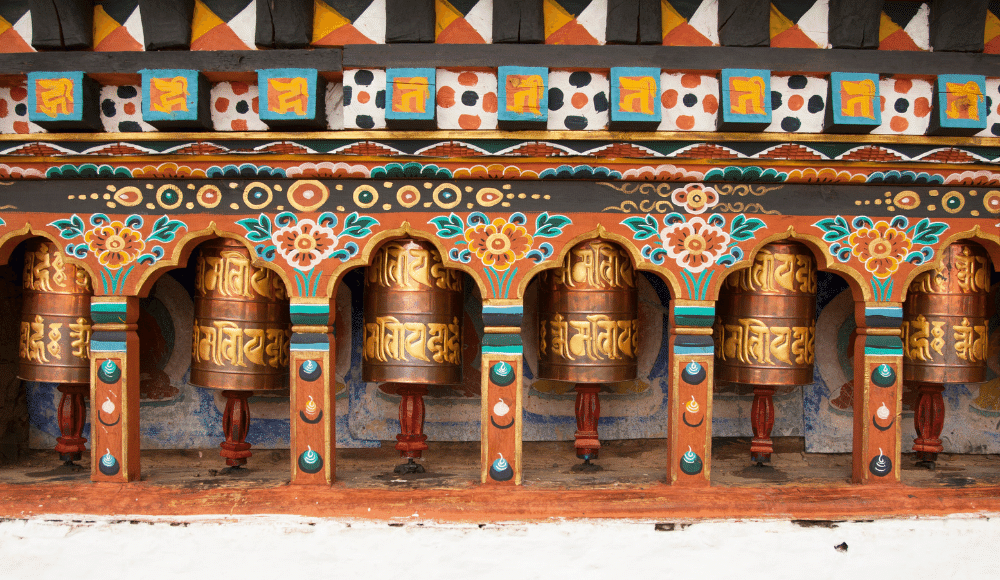
In the 8th century, Guru Padmasambhava and several other Buddhist saints, including Phajo Dugom Zhigpo and Lam Kha Nga, visited the Kyichu Lhakhang, giving it holy significance. The monastery is also said to contain many spiritual treasures hidden by Guru Padmasambhava.
Kyichu Lhakhang is an important place of art and culture for historians, art aficionados, and visitors worldwide.
The landscape is tranquil and serene as one goes towards Kyichu Lhakhang. The medieval monastery is a wonderful spot to visit, with elderly pilgrims spinning prayer wheels and circumambulating the temple.
Today, Kyichu Lhakhang is a prime example of beautiful Bhutanese architecture influenced by the country's distinct cultural and religious traditions. This is one of Bhutan's most revered shrines.
You can visit Kyichu Lhakhang throughout the week from 9 AM to 4 AM.
Kuensel Phodrang is a massive Shakyamuni Buddha statue built in Bhutan's mountains. Over a hundred thousand tiny Buddha sculptures are housed within the statue. It is one of Thimpu's busiest intersections. Visitors can obtain a good view of the Thimpu valley from the Buddha point, which is only a short drive from Thimphu City Centre.
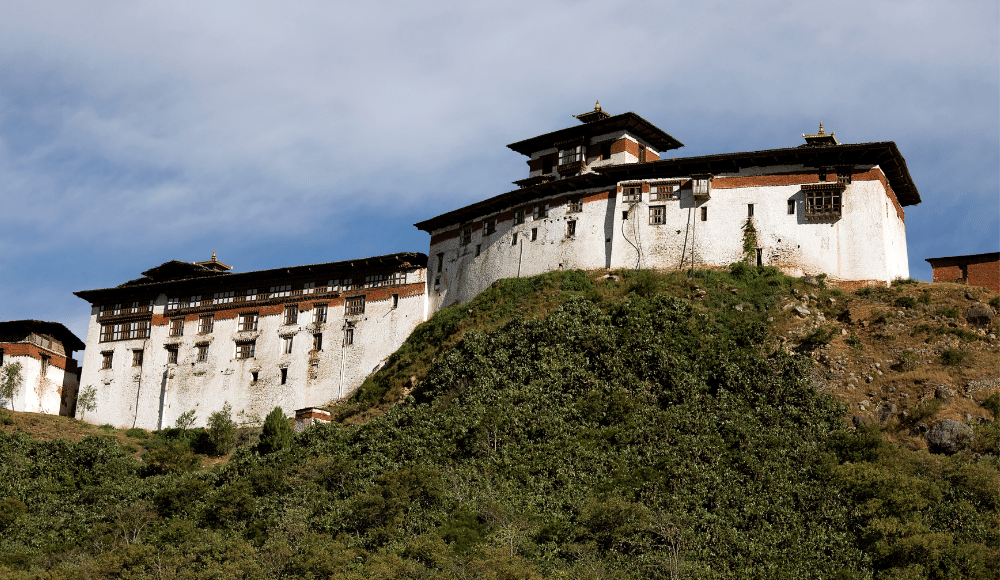
It's one of Thimpu's most lively areas. The true name is Kuensel Phodrang, although it is known as Buddha Point in the area. Because it is home to the world's largest Buddha statue, it is known as the Buddha Point. The word “Kuensel” means “everything is clear”. This place surely provides you with a great view of the Thimphu Valley on both sides. The statue will house a temple inside it, the statue and its adjoining car park and recreational center.
Hundreds of little statues are also a fascinating sight to see and enjoy when it comes to Buddhism. This magnificent Buddha statue can be viewed from all corners of Thimpu and is one of the city's most important attractions.
You certainly have to visit this magnificent place and witness the wonderful Buddha statue on your trip to Bhutan.
You can visit Kuensel Phodrang throughout the week timings ranging from 9 AM to 5 PM.
Dumsibu, Paro, Bhutan is home to Namgay Artisanal Brewery. They create a variety of varieties of beer, taking into account varied drinking palates and ensuring that all beer fans are satisfied.
This, combined with craft brewers' inventive natures around the world, has grabbed the industry by storm, allowing them to always create something new.
You wouldn’t expect to find a microbrewery in Paro, which makes the Namgay Artisanal Brewery one of the most exciting places to visit in Paro. Established by Dorji Gyeltshan, the microbrewery serves local drinks such as apple cider and beer like the pale and dark ales, pilsners, red rice lager, milk stout wheat beer, and craft beer.
The brewery was founded with the goal of fostering a vibrant local beer culture in Bhutan, and it holds the Bhutanese Beer Festival every year to that end. You should definitely visit the establishment to sample their distinctive brews and regional flavors.
Punakha Dzong is the second oldest Dzong in Bhutan, built by Ngawang Namgyal, the first Zhabdrung Rinpoche. It is unquestionably one of the most beautiful dzongs in Bhutan. The spring season brings out even more of Punakha Dzong's splendor. The Dzong, which sits at the junction of the Po Chhu (male) and Mo Chhu (female) rivers in the Punakha Valley, was previously the capital and seat of the government until the 1950s.
Punakha Dzong is a magnificent and melancholy structure. Punakha Dong was a significant area for Bhutan's monarchs to live and hold ceremonies in the past.
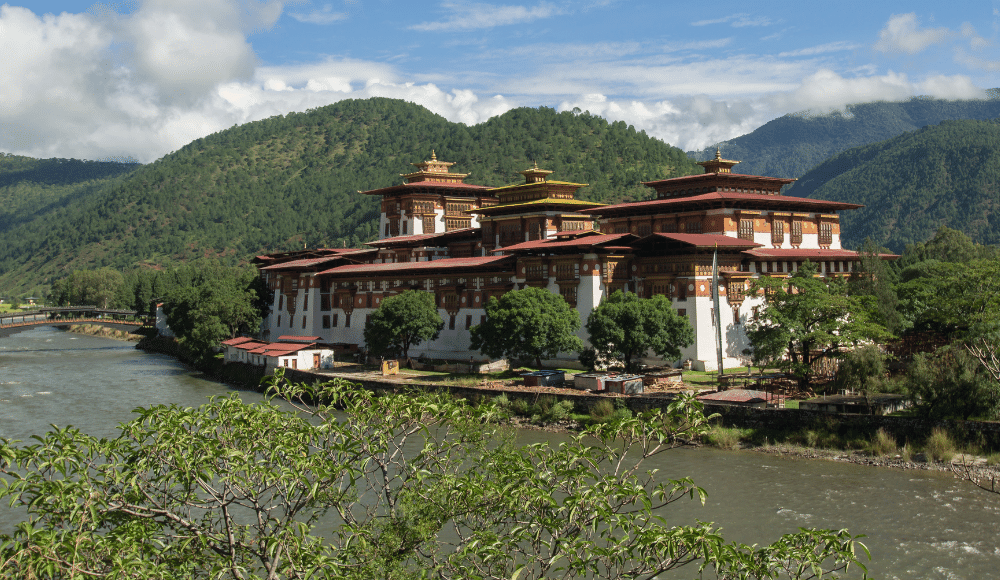
Punakha Dzong is often regarded as Bhutan's most stunning Dzong fortification. Visitors can view white buildings rising tall with red windows on the white external walls, bright and colorful, as they cross the ancient wooden bridge over the Punakha River.
Moreover, It is one of the most majestic and gorgeous Dzong, also considered as the place of great happiness.
Punakha Dzong is closed on Sundays. It opens from 11-1 PM and 2-4 PM on Saturdays, and from Monday to Friday, it is open to visitors from 9 AM to 5 PM.
Haa Valley, the smallest Dzongkhang (district) in Bhutan, is one of the most gorgeous locations and is situated to the southwest of Paro. For ardent hikers and trekkers, the appropriate wooded forests and trails are ideal. Additionally, this is the only location in the world where one can discover the Blue Poppy.
The Valley in Bhutan offers the most fantastical views, despite being quite remote and lacking in attractions. A little Bhutanese community lives there along with nomadic herders. Haa valley is sometimes referred to as the "Hidden-Land Rice Valley" since rice, barley, and wheat make up the majority of the crops farmed there.
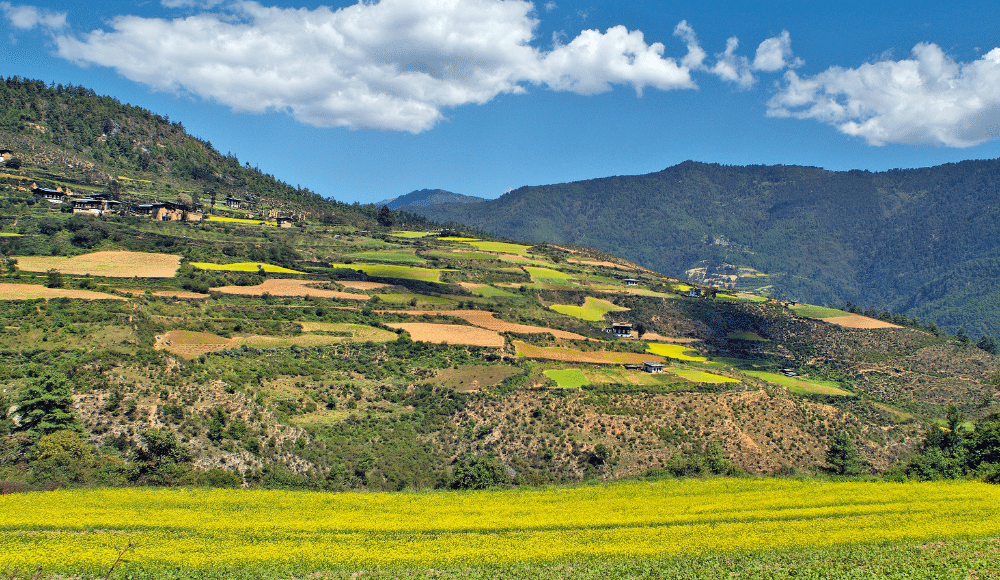
The western Bhutanese country of Bhutan is home to the cozy valley of Haa. The attractive location is spread out over a vast area and is surrounded by the districts of Paro, Chhukha, and Samtse. The core of Haa Valley is entwined with its long history.
Today, the valley is a unique repository of genuine, varied cultural traditions adorned with myths and stories. Haa is worth a visit for its stunning natural scenery and outstanding examples of prehistoric Buddhist architecture.
The valley of Haa is underrated but is one of the most surreal valleys of Bhutan that you shouldn’t miss when visiting Bhutan.
Get in touch with our experts right away and finalize an experience!
About UsBhutan is called the “Land of Happiness” because here, gross national happiness is given more importance than the gross national product. Bhutan has also established an index for measuring happiness.
Bhutan is also known as the “Land of the Thunder Dragon.
Spring (March to May) and Autumn (September to November) seasons are the best time to visit Bhutan.
Bhutan is not complete without its dzongs. Dzong typically refers to a "castle" or "monastery." Dzongs were employed as fortifications in the past. However, they serve administrative and religious purposes in the current setting.
Yes, of course. There are different beautiful trekking trails in Bhutan. If you want adventure in Bhutan, then there are numerous options for trekking and hiking.
There are numerous activities that you can do in Bhutan which include sightseeing, hiking, trekking, bird-watching, exploring different flora and fauna, and many more.